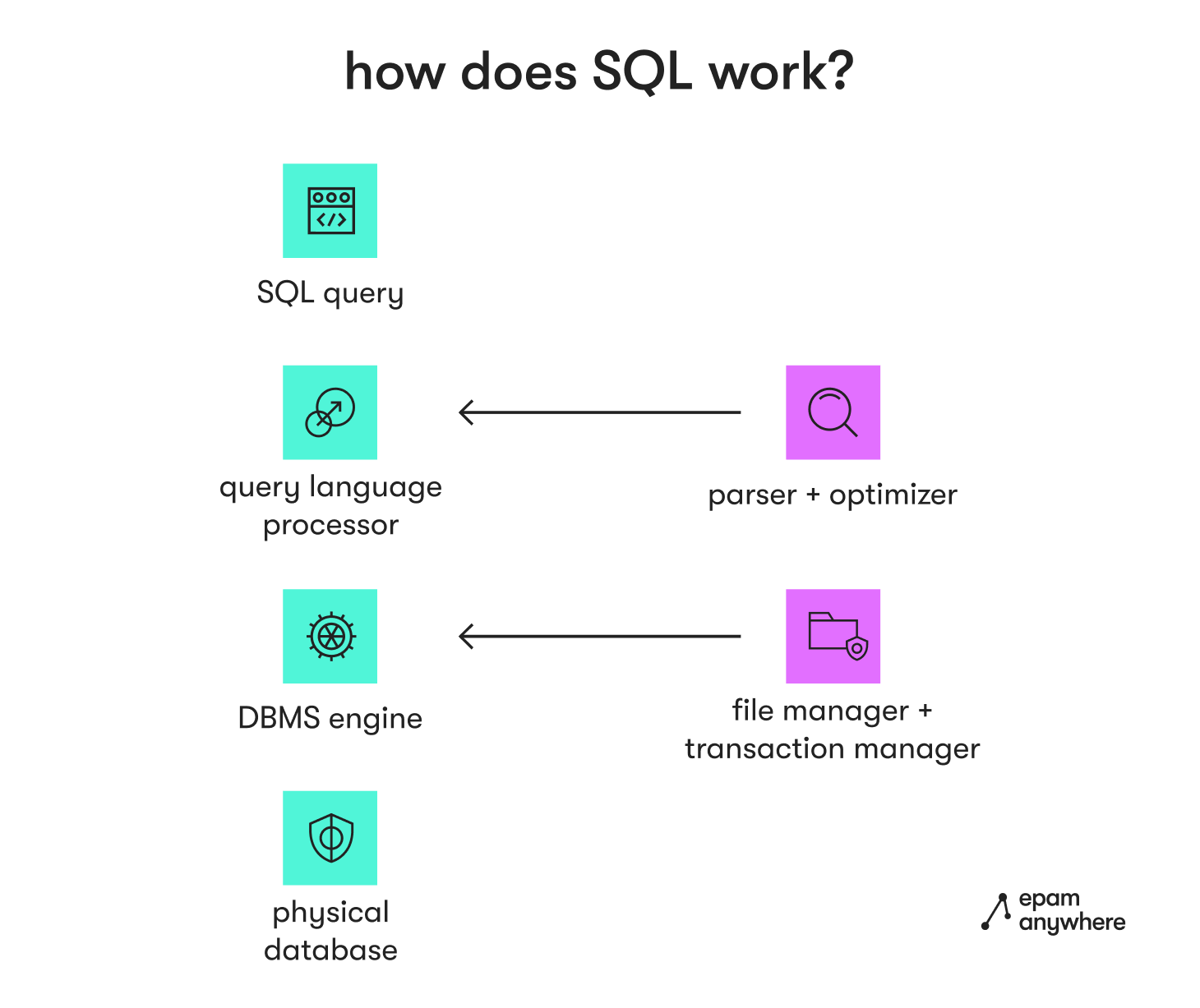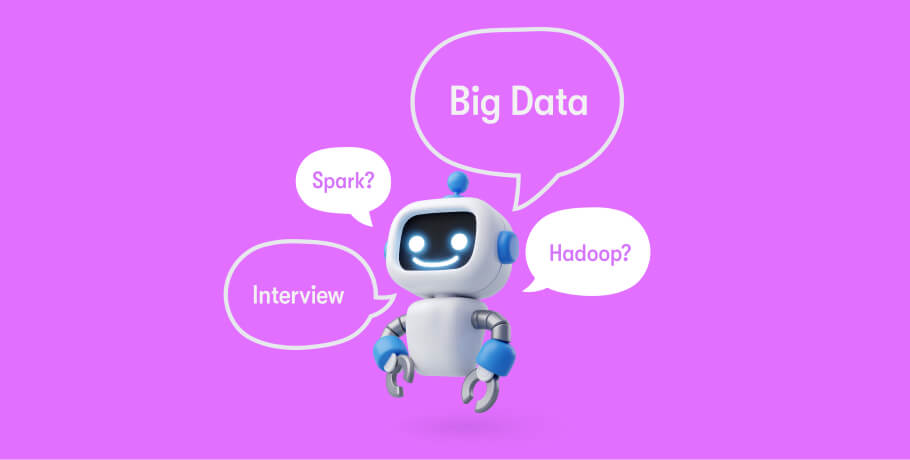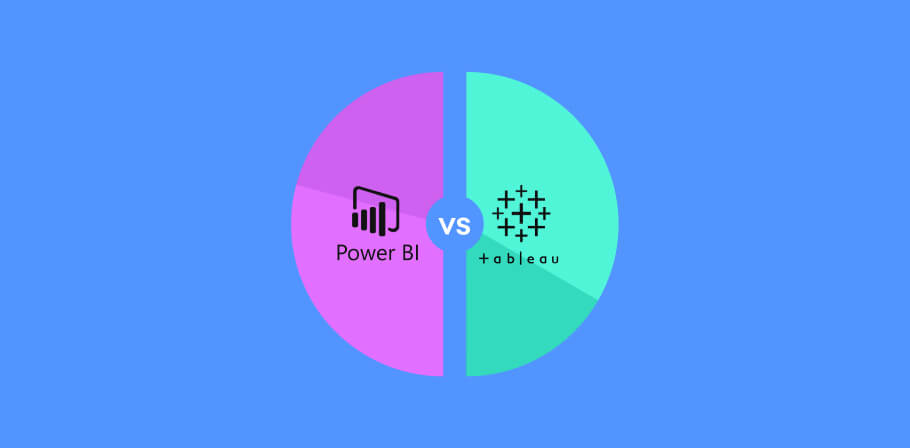SQL is a programming language used with relational databases, allowing tech pros to add, delete, manipulate, and manage entries.
While most tech professionals have heard the term “SQL” — pronounced “sequel” — many still wonder what SQL is exactly. If you’re asking questions like “What is the SQL definition?” and “How does SQL work?” here’s everything you need to know.
SQL meaning and evolution
To understand the SQL meaning, it’s helpful to start with what the letters in the word represent. SQL stands for Structured Query Language, which is a programming language that allows developers and others to interact with information stored in a SQL database or various other relational databases, such as MySQL, Oracle, and Microsoft SQL Server. That includes returning specific types of data based on the query, making edits, performing deletions, and managing other data manipulations as needed to keep records up to date.
While it’s possible to retrieve data directly from an SQL database, you can also access data to use in other platforms. For example, if data requires further analysis, Python or R platforms can tap into an SQL database to gather the necessary information.
A brief history of SQL
IBM researchers Raymond Boyce and Donald Chamberlin initially developed the SQL programming language in the 1970s. The pair used a paper written by Edgar Frank Codd as a basis, in which Codd proposed the need to connect the information in databases in a particular matter — a connection that he referred to as “relations.”
Using Codd’s theory as a guide, Boyce and Chamberlin developed what was originally referred to as SEQUEL. The language allowed users to retrieve and manipulate data stored in IBM’s System R, its initial relational database solution. As a result, it remained proprietary for several years.
However, in time, SQL went public. Relational Software — a company that later became Oracle — released its version of SQL under the name Oracle V2. In time, the use of SQL grew, and it was later dubbed the standard language for relational database communication by the American National Standards Institute (ANSI).
While SQL database or server companies often slightly modify the language to meet their unique needs, the variances are typically minute. As a result, developers who understand SQL can usually transition easily between systems, relying on ANSI-approved versions of SQL.
However, SQL didn’t stop developing after it was defined as a standard. SQL 3 — which launched in 1999 — introduced a range of new features, such as object orientation and triggers. SQL 2003 integrated XML features and window functions, while SQL 2006 included XML Query Language support.
With the arrival of SQL 2011, there was increased support for temporal databases. Additionally, SQL 2016 introduced even more features, such as support for polymorphic table functions and row pattern matching, as well as JavaScript Object Notation-based adjustments.
Ultimately, SQL continues to change with the times, ensuring it remains relevant for build needs and data management as the landscape shifts. As a result, SQL has managed to maintain its status as a critical language for storing and processing data for decades, and it will likely remain part of the equation for decades to come.
Is SQL a language?
Technically, SQL is a language, though it’s far less complex than many other programming languages, such as Python, C+, and JavaScript. Essentially, any artificial language with clear semantic and syntactic rules that controls the behavior of computers or similar machines qualifies as a programming language.
The SQL language is highly focused in regard to its function. It's designed explicitly for communicating with relational databases. Even though other programming languages may offer more versatility, that doesn’t mean SQL isn’t a language.
How does SQL work?
When interacting with an SQL database, how SQL works is relatively straightforward:
- After writing and running a query, the request is processed by a query language processor.
- Then, there’s a parsing process where the query syntax is checked.
- Next, there’s a binding phase that verifies the semantics.
- This coincides with an optimization step that designs an efficient plan for executing the query, essentially shortening response times by choosing the ideal strategy.
- After optimization, the query executes.
- In turn, it returns the requested data after retrieving it from the SQL database or performs the needed action to alter, update, delete, or otherwise maintain data records or field values in a table.
While that overview is somewhat simplistic, it’s a reasonable synopsis of how SQL functions. However, to understand SQL further, it’s critical to understand various components within SQL queries and how they’re executed, as well as situations where it’s used and how it interacts with other technologies.

SQL Commands and Elements
SQL relies on Commands and Elements to perform specific tasks. Elements is a general reference to the various functions and components that allow SQL to operate. Keywords, Expressions, Strings, Identifiers, and more are all part of the SQL language, and these are classically referred to as Elements.
Commands — which are also referred to as Clauses — define the type of action that needs to occur. They are effectively a set of keywords that align with a particular processing instruction. For example, SELECT is a command that determines which data columns to include in the results, while FROM defines the table being queried. CREATE TABLE creates new tables, while ALTER TABLE allows the user to update a table’s structure.
SQL standards and processes
SQL standards ensure that processes move forward correctly. Generally, this includes various structural elements of the SQL language, such as syntax.
For example, queries have to follow a specific structure to execute. Usually, that means beginning with an SQL command, identifying what’s needed, and defining the table. Finally, an SQL statement features a semicolon at the end, which represents a termination. The use of the semicolon creates opportunities for complex statements.
When it comes to case, SQL is case-insensitive overall. While many developers and users prefer to write Commands in all-caps since it makes those elements more visible, that isn’t required. As a result, a query written in all lowercase will typically still execute.
SQL use cases
SQL is used in a wide variety of industries for database administration. It’s favored for structured data with clear connections between various tables. For example, SQL works well for personnel records, inventory management, customer insights data, and finance and accounting tracking.
With SQL, it’s also possible to support broader data analytics activities. Ultimately, SQL makes retrieving data from relational databases simple, and the information is usable by a wide range of data analytics tools. However, its potential extends far beyond those examples, particularly when it comes to websites.
SQL in websites
As mentioned previously, SQL is preferred for many website designs that require quick updating capabilities. Often, SQL databases serve as a critical part of the backend, allowing the site to provide data to visitors rapidly and in response to their activities, typically far quicker than some alternative approaches.
Often, SQL supports website search functionalities. When a user inputs a term into a search field, it’s converted into a query. Then, using that query, the necessary details are returned to provide information from the database to the user.
SQL for machine learning
Machine learning technologies and SQL often go hand-in-hand. A machine learning engine frequently relies on relational databases as data sources. In turn, that makes SQL a critical component of related services.
For example, AWS Aurora allows users to benefit from machine learning by using SQL, eliminating the need to learn more complex languages to accomplish various tasks. As a result, anyone looking for machine learning remote jobs benefits from honing their SQL skills.
SQL in Python
SQL and Python work well together, particularly in the worlds of data science and data analytics. Often, querying relational databases is critical for data analysis. SQL allows for quick information-gathering based on specific parameters, while Python provides analytical capabilities beyond what’s potentially available through SQL querying alone.
As a result, if you’re looking for Python projects for your portfolio, having an example that involves SQL is potentially beneficial to you as a candidate.
SQL databases
Databases are functionally a collection of tables that store structured data. SQL tables are comprised of rows — which are also called tuples or records — and columns, which are referred to as attributes. Every column contains one specific type of data. For example, in a company product database, one column may hold a dollar amount denoting the selling price of that item. In a personnel database, a column might contain a text-based field noting the department where an employee works.
What is MySQL?
MySQL is an open-source SQL database management system that is developed, maintained, and distributed by Oracle. Using MySQL means that companies can bypass writing SQL for their databases, giving them a built-in rapid-deployment option that’s ready to use while remaining modifiable.
As an open-source solution, MySQL is also cost-effective. It’s available for free, so anyone needing it can download the software and use it in their database server applications or builds.
While MySQL can provide value for nearly any database need, it’s especially popular for websites that need to update content quickly. As a result, it’s found on numerous web servers. Many of the world’s most well-known website-based brands rely on MySQL for their builds and operations due to its agility and high availability.
What is NoSQL?
NoSQL — which stands for “not only SQL” — is a relatively new concept in the world of database management systems. It doesn’t strictly adhere to relational database construction or best practices. Instead, it allows for non-relational databases — a feature that can help companies overcome specific challenges.
One of the areas where traditional SQL relational databases struggle is data volume. Once the amount of data gets to a specific point, a SQL system may get bogged down, leading to longer response times. While upgrading hardware (a process known as scaling up) or adding hosts (known as scaling out) are potential solutions, both are often cumbersome or costly.
With NoSQL, scaling out is simpler. There isn’t a need for strict adherence to relational database models, thus offering more flexibility. However, they’re relatively specialized systems, and NoSQL does have its drawbacks.
Still, it’s a skill worth developing for any professional in a database-oriented role, such as in remote data engineer jobs, especially at companies with swaths of data that aren’t fully manageable using a relational database structure. For example, if you’re facing off against data analyst interview questions, there’s a strong chance that you’ll be asked about your NoSQL capabilities. As a result, showing that you’re competent in that arena works in your favor.
Benefits of using SQL
Part of the reason SQL remains relevant today is that the language offers a wide array of benefits to users.
- First, SQL queries process fast. Even if the dataset is incredibly large, SQL can process requests and retrieve information with surprising speed. As a result, it’s possible to retrieve or manipulate data without the delays that come with certain other approaches.
- With SQL, several data transactions can occur simultaneously, making it possible to concurrently write large quantities of data. In turn, this allows for greater processing speed, which can lead to better performance when compared to solutions that don’t support concurrent activity.
- SQL is incredibly simple to use compared to other programming languages. Generally, SQL is a keywords-based language. The user simply uses the keyword relating to the action they want, identifies the table or dataset, and gets the information they need rapidly.
- The fact that SQL is a standard also works in its favor. Many professionals are familiar with it, including a notable number who aren’t in tech jobs. As a result, it’s easy to transfer SQL skills to other systems using the language, reducing the learning curve.
- Overall, SQL is highly accessible thanks to portability, as it works well on a range of devices. The open-source nature of SQL also ensures adaptability while keeping deployment costs relatively low. The fact that SQL supports multiple data views is also beneficial, as it creates several avenues for examining the structure and content of a database.
However, it’s critical to note that SQL isn’t necessarily a perfect solution. Overall, many consider SQL interfaces a bit clunky or cumbersome. Additionally, it’s not always the most cost-efficient solution available. Still, its high degree of accessibility, general user-friendliness, and speed when processing queries usually offset the drawbacks. Plus, since SQL is standardized and advanced coding skills aren’t necessary to use it, most consider any of the pain points easy enough to manage in exchange for its numerous advantages.
SQL skills and remote career options
SQL skills are beneficial to a wide range of professionals. Often, the clearest benefit applies to those looking for remote SQL developer jobs. Those roles explicitly connect to SQL, so having a strong skillset is generally essential.
SQL is also helpful for a range of database-oriented positions. For example, data engineering candidates are well served if they can speak to their SQL skills in a data engineer cover letter and resume. Often, SQL is fundamental in those positions, even if “SQL” isn’t in the job title.
However, SQL skills are wise to hone even if you aren’t in a database-focused role. In many cases, SQL is a research-oriented capability, so it’s beneficial for any career where interacting with large quantities of information is critical for success. Accounting, marketing, human resources, and many other professionals often need to leverage data, and SQL can make that far easier than using most alternatives.
Ultimately, SQL skills open doors to many remote career options — and the value of SQL will likely continue to rise as more fields and industries become data-driven. In the end, data retrieval and analysis provide value in nearly any sector, so honing your SQL capabilities is a simple way to potentially elevate your career and make you a stronger candidate for remote jobs.

As Chief Editor, Darya works with our top technical and career experts at EPAM Anywhere to share their insights with our global audience. With 12+ years in digital communications, she’s happy to help job seekers make the best of remote work opportunities and build a fulfilling career in tech.
As Chief Editor, Darya works with our top technical and career experts at EPAM Anywhere to share their insights with our global audience. With 12+ years in digital communications, she’s happy to help job seekers make the best of remote work opportunities and build a fulfilling career in tech.
Explore our Editorial Policy to learn more about our standards for content creation.
read more



















